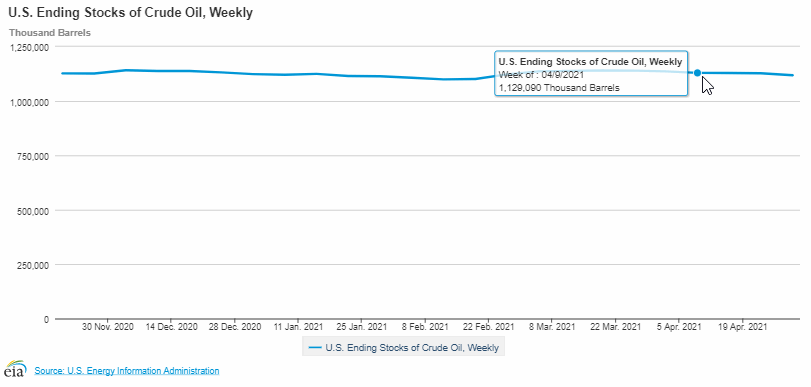Crude oil price rose for the fourth successive day
this week with the prospect of hitting $70 a barrel being close to reality.
On Thursday, it got a significant boost from the
latest crude inventory data from the EIA, the US Energy Information
Administration: the EIA says there was a draw of 8 million barrels during the
week ending April 30; it was more than what the API, the American Petroleum
Institute, predicted a day earlier, 7.688 million barrels; on this occasion,
the figured showed a clear sign of convergence.
Although, the US crude draw has always been a
catalyst when it comes to boosting the oil price, there are other factors at
play too, especially in a period of the once-in-a-century global health
emergency, the Coronavirus pandemic.
There are, meanwhile, clear signs that the vaccine
rollout is effective despite the emergence of the new variants of the virus;
both the US and UK are leading on this front and there are clear signals of infection rates
going down, especially among the vulnerable groups such as the elderly and
those with chronic health problems.
Buoyed by the positive development, both countries
are easing lockdown and activities are busy at the pumps, as motorists are back
on roads, getting on with their daily activities.
In Europe too, the fear of a third wave is gradually
subsiding and optimism is ripe in the capitals that the lockdown will be eased
before summer. Some European countries are even prepared to welcome tourists
from other countries provided that they show the proof of being vaccinated.
The situation in India and Japan, however, is far
from showing any sign of recovery; on the contrary, in India, it is going to
get worse before getting better; on Thursday, the daily infections went beyond 400,000
with over 3500 deaths. The country still grapple with oxygen shortage despite the
international help, because the logistical problems are mounting in proportion
to the infection rates coupled with collective national anxiety.
The crude oil demand in India, for obvious reasons,
is very low and will stay that way for some time. As a result, the import of
the commodity will suffer too in the short run; it will, however, take months
before the economic damage could be addressed in a pragmatic way in this vast
country, especially when the regional governments are perpetually at loggerheads
with the Central government over ideological issues.







